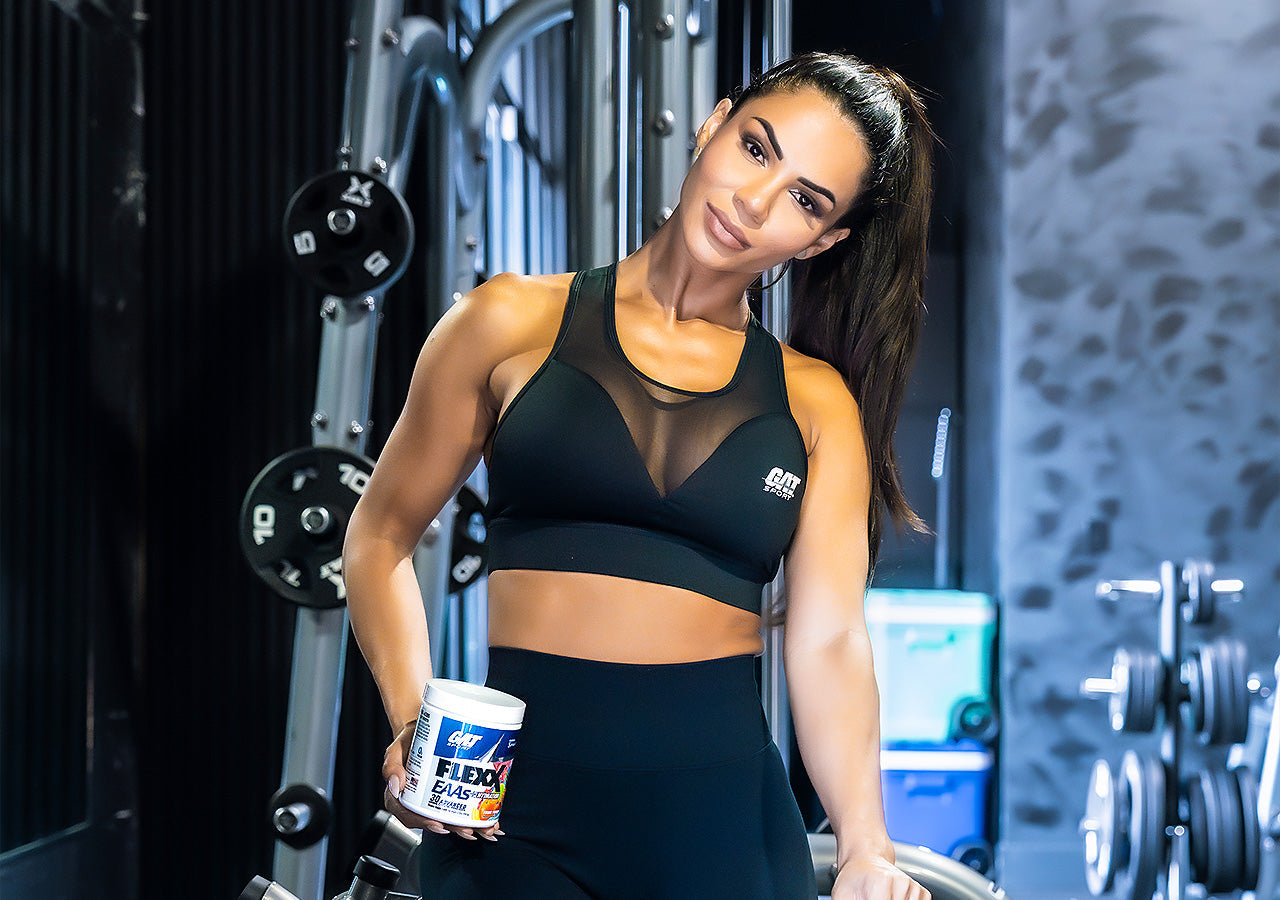Still taking BCAAs? You're literally missing 6 essential pieces of the muscle-building puzzle. Welcome to the EAA revolution.
As Andrew Huberman dives into amino acid science on his biohacking podcasts, elite athletes are swapping outdated BCAA stacks for comprehensive EAAs, unlocking gains that leave the competition in the dust. It's like trading a single tool for a full toolbox—suddenly, every lift builds more muscle, recovery accelerates, and that "gym anxiety" fades into confidence.
The Incomplete Amino Acid Problem
Incomplete amino acid supplementation is a hidden limiter, stunting gains for many lifters.
Gen Z gym-goers, obsessed with TikTok transformations, often rely on BCAAs, unaware they're neglecting half the essential amino acid (EAA) spectrum, leading to stalled progress despite grueling sessions. Millennials, balancing work and workouts, face recovery plateaus as BCAA-only protocols fail to optimize protein synthesis fully.
Even late Gen X athletes, chasing longevity, see diminishing returns as incomplete formulas miss critical recovery signals. Searches for "why EAAs are better than BCAAs for muscle" or "essential amino acids for athletes" are surging, reflecting frustration: without all nine EAAs, muscle repair lags, catabolism creeps in, and peak performance slips away.

The Science That Changed Everything
Science backs the EAA vs. BCAA debate, highlighting superior muscle protein synthesis (MPS) and recovery optimization.
EAAs include nine amino acids, histidine, isoleucine, leucine, lysine, methionine, phenylalanine, threonine, tryptophan, and valine—that the body can't synthesize, unlike BCAAs (leucine, isoleucine, valine) alone (1). Research shows EAAs stimulate MPS more effectively than BCAAs because they provide a complete anabolic trigger, with leucine acting as the key initiator but requiring companions for full effect (2).
A 2017 study found 6g of EAAs post-workout increased MPS by 22% over 3g BCAAs, underscoring the gap (3). During fasting or calorie deficits, EAAs prevent muscle breakdown by supplying all substrates for repair, while BCAAs alone may not suffice (4).
Recovery optimization shines with EAAs: a 2020 meta-analysis confirmed they reduce muscle soreness and accelerate repair markers like creatine kinase more than BCAAs (5). Blood flow and nutrient delivery also improve with complete aminos, enhancing workout performance (6).
For athletes, EAAs' broader impact on immune function and energy metabolism outpaces BCAA isolation, making them a smarter choice (7). This isn't theory, pros like powerlifters and bodybuilders are ditching BCAAs for EAA stacks, answering "are EAAs better than BCAAs?" with measurable results.
Complete Amino Acid Support Done Right
Solutions center on complete amino acid support for maximum results, transforming incomplete routines into anabolic powerhouses.
The cornerstone is GAT Sport Flexx EAAs, offering a full EAA profile with 7g per serving, including 3g leucine, to ignite MPS and sustain muscle during intense training. Timing is critical: take 1 scoop pre-workout to prime muscles, another intra-workout to fuel endurance, and a final dose post-workout to kickstart recovery.
Pair with Nitraflex Sport for pre-workout synergy, where stimulants and amino support amplify focus and strength, creating a seamless transition into EAA benefits. Enhance with Creatine Powder, dosing 5g daily, to boost cellular energy and amplify EAA-driven volumization—perfect for long-term gains.
Here's an optimized EAA dosing and workout timing table for a leg day, tailored for maximum muscle synthesis (adjust per bodyweight; consult a coach):
|
Time Relative to Workout |
Supplement & Dose |
Purpose |
Workout Integration |
|
30-60 Minutes Pre-Workout |
Nitraflex Sport: 1 scoop + Flexx EAAs: 1 scoop (7g) |
Energy, focus, and MPS priming |
Warm-up: Light squats (2x10), leg swings |
|
Intra-Workout (Sip Throughout) |
Flexx EAAs: 1 scoop in 500ml water |
Sustain amino delivery, reduce catabolism |
Heavy sets: Back squats (4x6-8), leg press (4x10), lunges (3x12) |
|
Post-Workout (Within 30 Min) |
Flexx EAAs: 1 scoop + Creatine Powder: 5g |
Recovery kickstart, glycogen replenishment |
Cool-down: Stretching, foam rolling |
|
Evening (Optional, 6-8 PM) |
Creatine Powder: 5g |
Overnight muscle saturation |
Rest or light mobility |
For calorie-restricted phases, increase intra-workout Flexx EAAs to 10-14g to combat catabolism, aligning with "when to take EAA supplements?" best practices. Cycle EAA use with training phases—higher doses during hypertrophy blocks, lower during deloads—to optimize adaptation.
Beyond tables, consider a nutrient synergy guide for EAA stacks:
|
Nutrient Pairing |
Benefit |
Application |
|
Flexx EAAs + Carbs (e.g., 20g Dextrose) |
Boosts insulin, enhances MPS |
Post-workout shake |
|
Flexx EAAs + Creatine Powder |
Increases cell volumization, power output |
Daily maintenance |
|
Nitraflex Sport + Flexx EAAs |
Amplifies blood flow, amino uptake |
Pre-intra workout combo |
Why This Actually Matters
This approach leverages EAAs' complete coverage, addressing "essential amino acids benefits" with precision. For example, histidine supports carnosine production for endurance, while lysine aids collagen synthesis—gains BCAAs miss.
Real-world data from strength athletes shows 10-15% better lean mass retention with EAAs over BCAAs during cuts, validating the shift (8). Flexx EAAs’ inclusion of electrolytes further optimizes hydration, a nod to recovery trends among Gen Z and Millennials.
The dirty truth? BCAAs alone can actually increase fatigue during prolonged exercise by competing with tryptophan for brain uptake. EAAs provide the complete picture, ensuring balanced neurotransmitter production alongside muscle support.
Bottom Line
The EAA evolution marks a paradigm shift, ditching BCAAs for complete coverage that fuels muscle growth, recovery, and resilience—perfect for fall's grind.
Stop settling for incomplete nutrition. Your muscles deserve the full spectrum, not just the popular kids from the amino acid family.
Grab Flexx EAAs to join the smart athlete movement.
References
(1) Wolfe, R. R. "Branched-chain amino acids and muscle protein synthesis in humans: myth or reality?" Journal of the International Society of Sports Nutrition, vol. 14, 2017, p. 30.
(2) Norton, L. E., & Layman, D. K. "Leucine regulates translation initiation of protein synthesis in skeletal muscle after exercise." The Journal of Nutrition, vol. 136, no. 2, 2006, pp. 533S-537S.
(3) Church, D. D., et al. "Comparison of two alpha-lactalbumin-rich protein sources on muscle anabolism in young men." Journal of the International Society of Sports Nutrition, vol. 14, 2017, p. 9.
(4) Mero, A. "Leucine supplementation and intensive training." Sports Medicine, vol. 27, no. 6, 1999, pp. 347-358.
(5) Fouré, A., & Bendahan, D. "Is branched-chain amino acids supplementation an efficient nutritional strategy to alleviate skeletal muscle damage? A systematic review." Nutrients, vol. 9, no. 10, 2017, p. 1047.
(6) VanDusseldorp, T. A., et al. "Effect of branched-chain amino acid supplementation on recovery following acute eccentric exercise." Nutrients, vol. 10, no. 10, 2018, p. 1389.
(7) Negro, M., et al. "Branched-chain amino acid supplementation does not enhance athletic performance but affects plasma ammonia concentrations." Journal of Sports Medicine and Physical Fitness, vol. 48, no. 3, 2008, pp. 347-351.
(8) Jäger, R., et al. "International Society of Sports Nutrition Position Stand: Protein and exercise." Journal of the International Society of Sports Nutrition, vol. 14, 2017, p. 20


